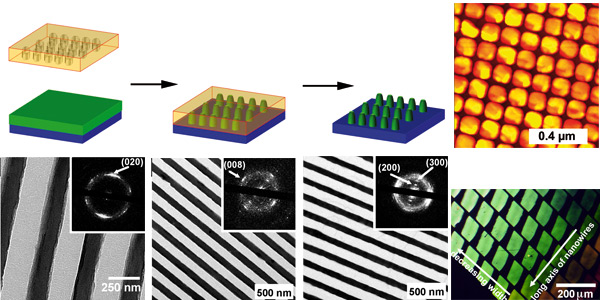Confined polymer crystallization

Context : When crystallized in the bulk state, polymers adopt a very disordered morphology made of thin crystalline lamellae packing into aggregates of spherical symmetry, called spherulites. This is often detrimental to properties, since in a macroscopic sample all crystal orientations co-exist. Some crystals will be aligned favorably for a given property, others will not.
Our contribution :
We have created and pioneered the use of a methodology to force polymer crystals to adopt a preferred orientation, and at the same time improve their perfection. The method consists of confining the polymer in the nanocavities of a mould, which controls nucleation and favors graphoepitaxy. This work made it to Nature Materials, among other journals, and a review also appeared in Soft Matter.
Currently,
we use this method to organize functional polymers, such as conducting, semiconducting, electroluminescent, or ferroelectric polymers.
In all cases, improved properties are obtained. More recently, we have been using this methodology to fabricate ferroelectric memory devices made of nanostructured layers of ferroelectric and semiconducting polymers.
Collaborations are with the partners of the MOMA EU project, Zhijun Hu (Soochow University), Roberto Lazzaroni (UMons), and Luc Piraux and Bernard Nysten of UCLouvain.

